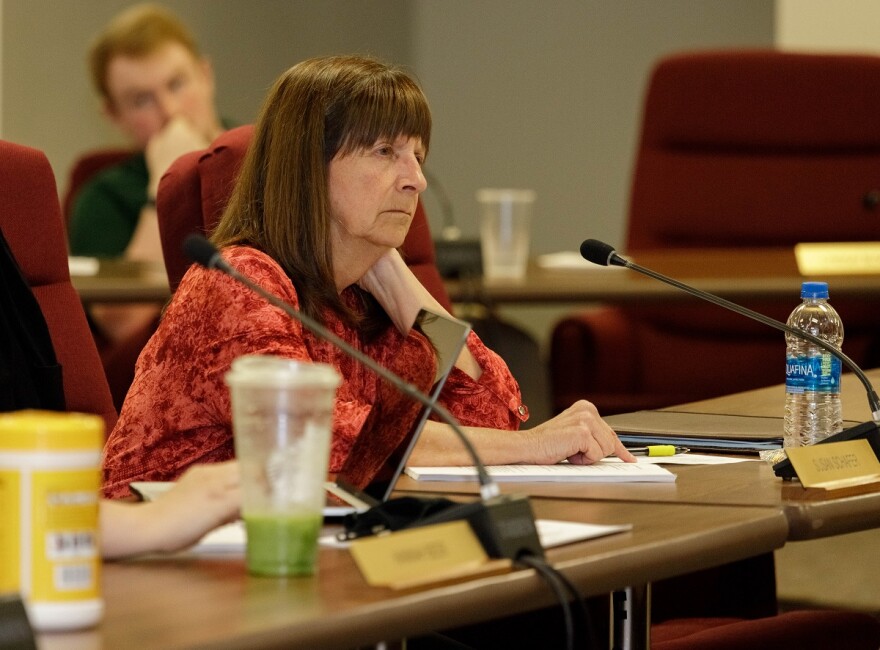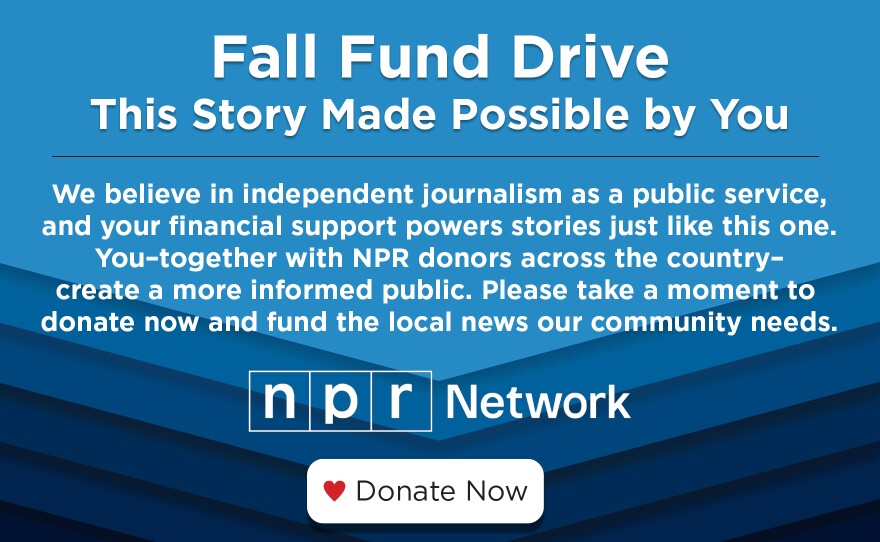McLean County has a mental health problem. Almost a decade ago, it acknowledged this fact with the Mental Health Action Plan, a roadmap for resolution.
But as recently as 2022 behavioral health is still a priority area, according to the Community Health Needs Assessments.
Funds — including tax dollars — have gone into improving resources, and various programs and expanded services have been introduced. There was the FUSE — Frequent User Systems Engagement — in 2019. Then in 2020 came the Triage Center, which recently became the Behavioral Health Urgent Care under the management of the Center for Human Services.
County Board member Susan Schafer said even the full scope of the problem — the number of people in the county who have a mental health condition — is unclear.
“If you don't know what you don't know, you can't target anything to create any new programs to fill those gaps,” she said.
An ongoing initiative
To help, the Behavioral Health Coordinating Council is hoping to create a mental health database that will combine client information from health care providers, shelters and the criminal justice system to better coordinate care.
McLean County has been sharing ideas with counties nationwide on innovative practices like this one since 2016.
It goes back to the Obama Administration's Data-Driven Justice Initiative. The National Association of Counties (NACo) has since taken over and retitled it the Familiar Faces Initiative.
Last year, the McLean County Crisis System Assessment by outside consultant TriWest also suggested this type of analysis.

But health care providers in McLean County have raised concerns about the legality of sharing client information required for this type of analysis, and until that happens, it’s a stalemate.
More gaps to fill
Frank Beck of the Stevenson Center for community and Economic Development said this can have multiple ramifications. Illinois State University’s Stevenson Center — which does economic impact analyses — would assist the county.
“Any programming to address mental health issues in the community, it requires having a handle on how big it is, or how small it is,” he said. “Right now there are persons availing themselves of different services in the community, but there they could be the same people at all of these different points.”
He added that this means people could be getting duplicated help or falling through the cracks.
The type of analysis the county wants to do would require individual patient information and identification — the goal being to connect the specific patients identified with the best service for their needs.
Schafer added the county is not interested in doing this work just to know which residents have mental health concerns.
Conversations between the county and health care providers have only just started. Schafer said it could be months or years before an agreement is reached, though the county does have methods of getting estimates that can continue informing work in the meantime. It also has agreements with Bloomington-Normal shelters and the jail to share information, but Schafer said medical providers are key.
“Are there individuals that aren't homeless that have a lot of jail bookings and a lot of [emergency department visits]?” Schafer said. “Probably, but we don't know that, and so there's probably a lot more individuals out there that can be targeted for outreach.”

Kevin McCall, director of behavioral health coordination for McLean County, pointed to NACo member Johnson County in Kansas, which he said has been successful in integrating healthcare information. The difference between Johnson and McLean, he added, is that their providers are run by the government, so they don’t have to work with multiple organizations like McLean.
“Because they have all that data together, they can make a lot more informed decision-making for individuals,” he said.
‘Obstacles’ to getting the data
Schafer has already reached out to several providers in the area to determine what it would take to get the data shared. This includes the Center for Human Services (CHS), the Center for Youth and Family Solutions (CYFS), and Chestnut Health Systems — all in Bloomington.
Director of Therapeutic Services at CYFS Stephanie Barisch said it’s not that providers are against sharing the information. It’s that their hands are tied. Illinois’ patient confidentiality laws are restrictive.
“Providers are really, really very limited in what we can share,” said Barisch, also a member of the BHCC.
Giving any detailed information about patients to the county — particularly those that would identify who patients are — would require patients to sign off on it, which Barisch said is not feasible.
“When we're serving hundreds of people in these kind of crisis situations, it could be a real challenge to try to get an individual signed release by every person to share that information with the county,” she said.
At CHS, compliance manager Kevin Mulloy said he needs to know more about how the data sharing would work before agreeing to anything that could compromise client information. This includes what information the county requires and a host of other variables.
“I could see benefits out of that, but as with everything in life, the devil is in the details,” he said.
One idea that the county is mulling over is to de-identify the data. This would require someone to go in and take out the names or other identifying information before it’s made public for the county.
Mulloy said even if this is done, it may not fix the confidentiality issue.
“There has to be a central point where I can compare, ‘Oh, Kevin was seen by Roman in the emergency room, and Kevin was seen by the crisis team," he said. “So someone's going to have to have all that information.”

Chestnut Chief Medical Officer Matt Mollenhauer said Chestnut would be more interested in sharing the big-picture data before wading into the deep end with the client-level information.
“I don't think that on a routine basis, we look at patient flow from key program areas,” he said.
For Schafer, these concerns are being kept in mind, but she does not consider them deal breakers.
“To me, a barrier means you can't go any farther,” she said. “To me, an obstacle is something you can figure out how to go around, over, under, whatever, to accomplish what you want.”
Barisch, Mulloy and Mollenhauer also all expressed interest in continuing conversation and said they understand how this database could be useful.
Success proven through Criminal Justice Coordinating Council
Data collection and analysis have already been done in other sectors, which the Stevenson Center’s Beck said has demonstrated the benefits. He said the center was able to determine the population of people with mental health concerns in the jails to help the Criminal Justice Coordinating Council.
They did this using the Integrated Justice Information System (IJIS), which tracks individuals as they move through the jails.
“We about five years ago, six years ago identified that 30% of the residents of the jail had a mental health issue,” he said. “Now doing that six years later, we're at 50%.”
His analysis also matches what he hears from jail staff about numbers.
The county has also partnered with the University of Chicago to couple IJIS data with shelter data to identify candidates for the FUSE program.
Beck said this shows promise.
“That's just an example of [how] the system is able to use data to identify persons who some special service or program could be built around,” he said.
What to do once the county gets the data
If the county gets the data, though, Beck said there will likely still be complications. Each entity keeps and formats its data differently, so the center will have to figure out how to match everything.
This was a concern for Mollenhauer at Chestnut.
“If you have 11 different social service agencies or healthcare agencies, you also have 11 different medical record systems,” he said. “And there is a technology piece, which then ties to a labor piece and a cost piece to generate then data that everybody can share and use.”
He said because hospitals frequently update how they keep data, it will burden the providers.
“That's not a one-time project,” he said.
Despite this, Beck said he is hopeful.
“The idea that units who normally work in silos are interacting with one another and sharing information and willing to partner, that led to great outcomes for the Criminal Justice Coordinating Council, and I see no reason why it's not going to lead to great outcomes for the Behavioral Health Coordinating Council,” he said.
Schafer said the obstacles are not a deterrent, and the county is on the right track.
“This is all transformational type stuff,” she said. “So it's culture change. It's system change, very big changes. So that takes time. And it takes a lot of a lot of individuals and a lot of different entities.”
What’s being done in the meantime
While all of this is going on “behind the scenes,” as Schafer puts it, the BHCC is still working to get other programs and resources out to the community.
McCall said he feels good about the current work.
“I think we're already doing a fairly good job of being able to quantify what some of that need is already,” he said.
This initiative has also gotten Mulloy of CHS excited about the prospect of a Health Information Exchange, which is a national concept. It’s when patient information is shared digitally between healthcare professionals and patients, across agencies. For this, the county would not be involved.
Mulloy called this “real-time data and information that I can use to help my client or my patient.”
The way it would likely work is one provider would get a notification on their phone or device when one of their patients has been using a crisis service, for example.
“I would at least be able to approach my clients say, ‘Hey, I noticed you went to the emergency department this week, and what happened?” Mulloy said.
Conversations between providers and the county started roughly a month ago.




